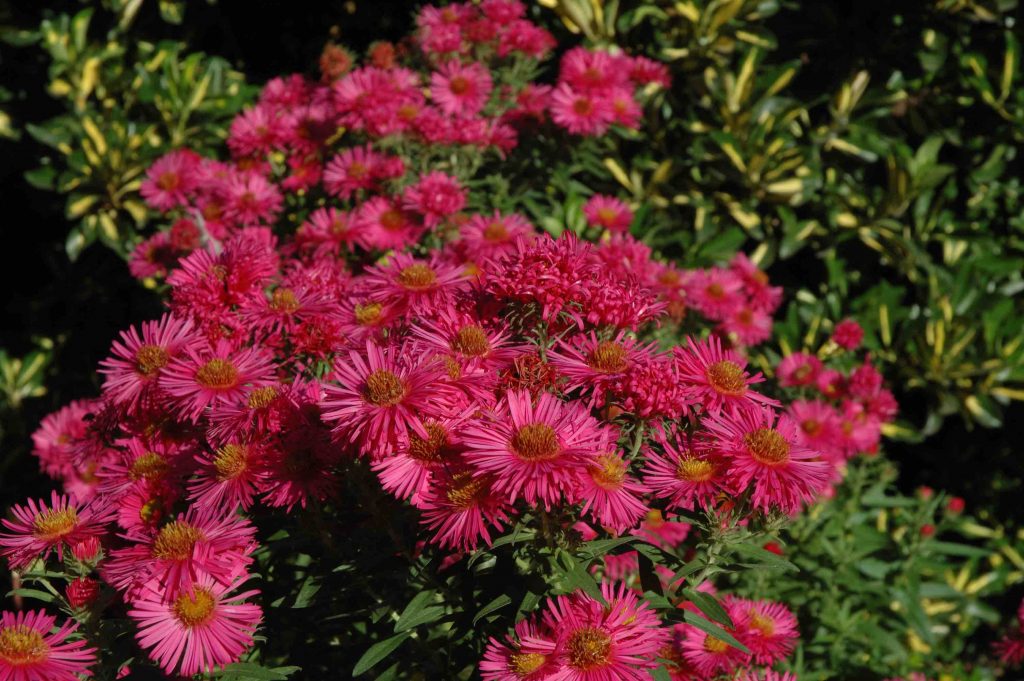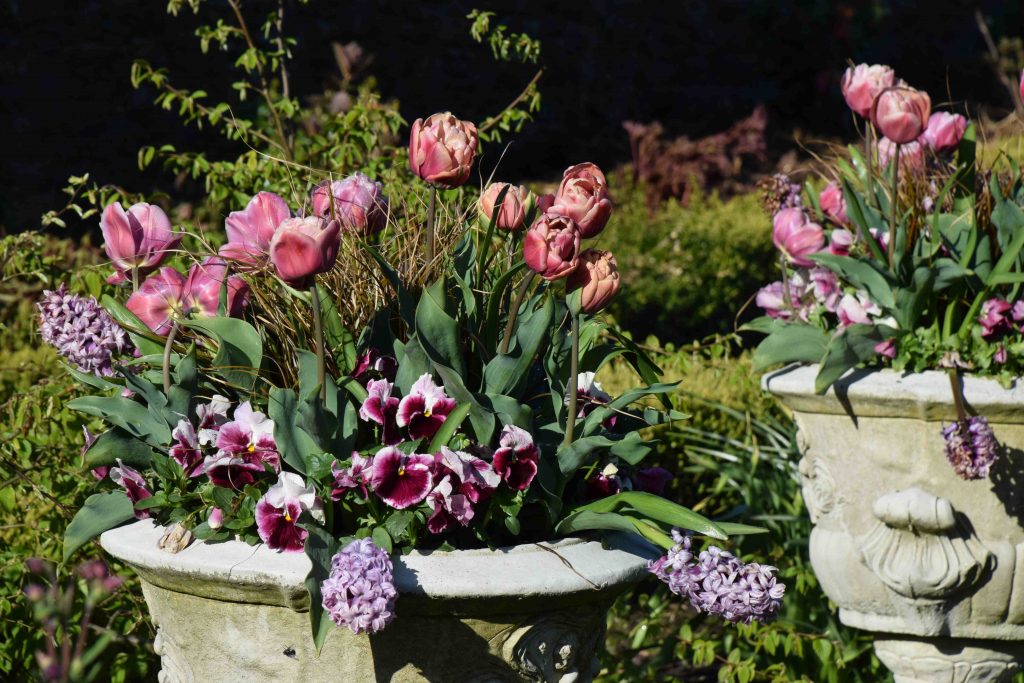
Michaelmas daisies (yes, this Tuesday is Michaelmas) are in my thoughts at the moment and may be in yours if the gales of the past week did not flatten them. These hardy perennials are invaluable for bringing colour to the garden in autumn but their late blooming works against them as much as for them. It is true that, all summer, they are something less than spectacular and their foliage is rather dull. Long gone are the days when we could devote a whole border to them, keeping well away from it until September when we could marvel in the display of colour.
And, as inevitably as the word hosta is associated with slugs, Michaelmas daises are prone to mildew. In fact, mildew is only really a problem in New York asters and then predominately if they are not divided and replanted regularly. To explain, most popular asters belong to the two big groups; the New York asters (Aster novi—belgii) and the New England aster s (Aster novae-angliae) both commonly called Michaelmas daisies.

Both groups have many desirable varieties but there are some important differences. The New York asters were, in the past, the most popular and they are certainly the most diverse, in flower colour, shape and plant size. Their main failing is that they are prone to mildew. The New England asters are distinguished by their bristly leaves, less diverse range of colours and greater resistance to disease.

In addition there are many more kinds of aster and some have become very popular. Of these, the early-flowering Aster amellus and its hybrid Aster x frikartii are perhaps the best. These are all low and mounded I habit with large, yellow-eyed daisies and they bloom for many months, making them perfect for the front of borders. Aster x frikartii was created in Switzerland in 1918 by the Frikart nursery and most of the varieties are named after Alpine peaks; ‘Eiger’, Jungfrau’ and ‘Monch’. Later they introduced ‘Wunder von Stafa’. This, and ‘Monch’, which are very similar, are as popular now as they were a century ago and hardy, colourful border plants and deserve to be in every garden.
To be accurate I have to say that the North American Asters, known as Michaelmas daisies, have had their name changed and are now Symphyotrichum – it will be a while before we get our tongues round that one!
Jobs for the week
Replacing summer plants in containers
I know you are just recovering from awful winds but here, in Ireland, I may be waking up to the first frost of the autumn. The past few nights have been down to 2c and I am bracing myself for blackened dahlias, at least a month before I would usually expect. In so many ways I feel like I want to turn my back on this year! So it is with relief that we can compost the summer flowers and replant baskets and pots for autumn, winter and spring display.

I am more generous with my autumn planting than for summer. Summer plants tend to be thrown away when they are no longer wanted but, because baskets and pots planted now will be dissembled in April or May, some of the plants can be ‘saved’ and put in the garden. So small evergreen shrubs and perennials like heucheras, can be used and then reused in the garden. This mitigates the cost and allows for the inclusion of more spectacular but short-lived flowering plants.

The ‘hardy’ mini-cyclamen, that are impossible not to buy, are not really fully hardy and often rot in wet winters, looking past their best by January. But they are so lovely that I have to put them in pots, and replace them in January with more violas or pansies which will carry on blooming till spring.

If replanting pots, replace the top 15cm of compost with fresh and add some controlled-release fertiliser. If planting bulbs, put them about 10-15cm deep and the plants on top.